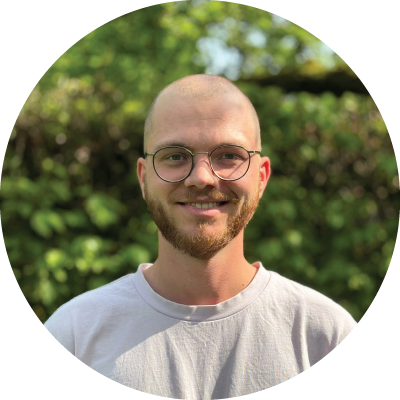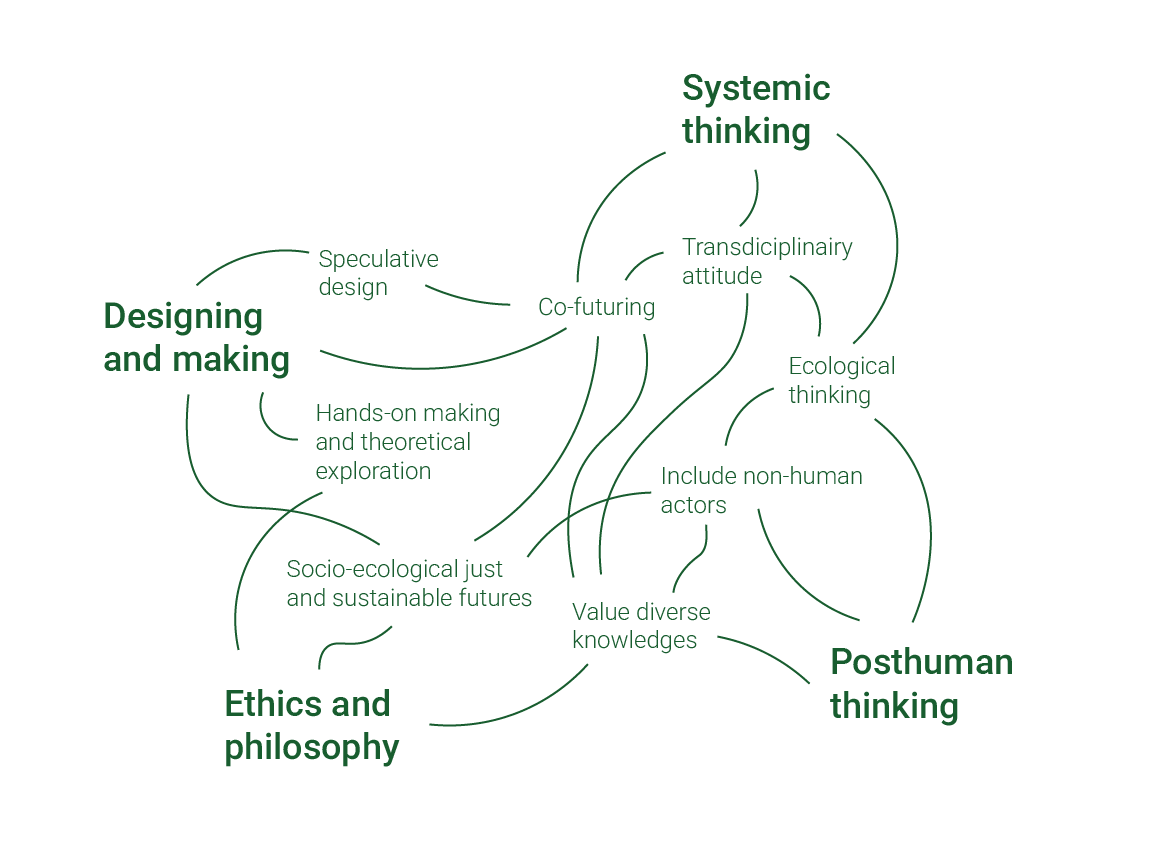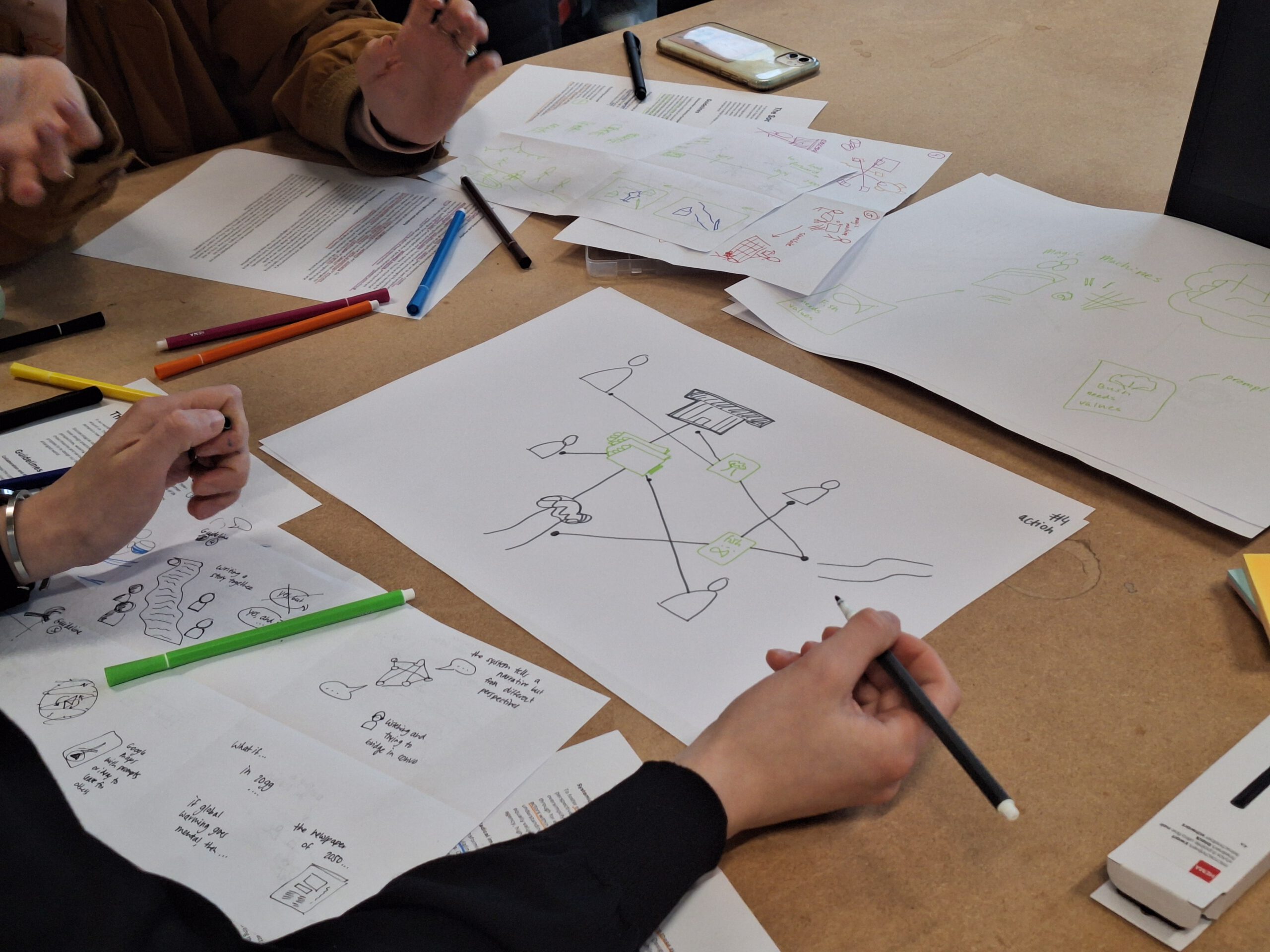"...complex problems are inherently entangled with both human and more-than-human worlds and demand design practices that embrace the interconnectedness of life."

3D modeling – Silicone casting techniques – Experiential design thinking – Methods in artistic research
Designing interactive interventions – Qualitative research – Constructive design research methods
Theory-informed UX design – Prototype-driven research – Human-centered interaction systems
Speculative design methods – Scenario design & storytelling – Engineering rich interaction
Workshop design & facilitation – Co-speculative prototyping – Design for sustainable behavior
Critical thinking – Ethics-driven design – Philosophical reading & academic writing
Hands-on material experimentation – Sensory design & emotional engagement – User perception analysis
Ecological UX – Ecological systems integration in design – Open-ended interaction design – Autoethnographic research
Inclusive design – Intercultural competence – Human-centered UX -Decolonized UX methodology – Place-based identity design
Multi-stakeholder tool development – Sustainable innovation & systems thinking – Leadership in design research

My attitude, skills, and knowledge are currently most aligned within the field of Transition Design. I am a design researcher driven to find new ways of dealing with complex societal issues through a transdisciplinary attitude, bringing together system thinking, futuring, and diverse knowledge systems to support the creation of more socially and ecologically sustainable worlds.
During the start of my masters I designed scenarios, experienceable speculative artifacts with emerging technologies, and facilitated discussions and workshops. This shaped my identity as a speculative designer who questions not only the responsibilities of technology but also aims to find out what world we would want to live in through futuring.
Engaging with philosophy and ethics further deepened my sense of responsibility, gave me a solid foundation to generate ideas, and fostered understanding of the transitional and transformational capability of design. My creativity feeds on the pairing of hands-on making with theoretical exploration, where I like to discover connections with contemporary design, design theory, technology, art, the sciences, and philosophies from which new conceptual ideas emerge.
Through this experience, my interest shifted away from the human-centered approach, and I started to engage with more-than-human design and posthuman thinking while exploring design as an open-ended tool. An exchange to New-Zealand introduced me to Maori worldviews and led me to value other knowledge systems in the world.


As design begins to shift away from dominant human-centred and capitalistic practices [4,7], I believe its power lies in encouraging critical reflection on the worlds we aim to create. Design can facilitate the empowering and pollinating of multidisciplinary expertise, supporting the creation of new situated knowledge(s). Speculative interventions can afford to artistically and critically mediate between humans and the world while opening up curiosity, critical thinking, and self-reflection about the issue at hand. This enables designers, users, and stakeholders to collaboratively take meaningful steps toward the horizon of more just and sustainable worlds.
Early in my journey, I was drawn to speculative design as a way to question and critique the role of technology in society. Influenced by Dunne and Raby [1,5], I used scenarios and experiential artifacts to open up thinking and spark debate, seeing design as a tool for reflection rather than solution.
Following thinkers like Haraway and Ingold [2,3], I started to see design as open-ended and transitional. An ongoing process of staying with the trouble. It is not about fixing complexity, but about learning to navigate it with care, curiosity, and responsibility. Inspired by the work on metamodern sensibility I see the intention of design as inherently not to solve, it is rather the delight in the attempt to solve in spite of its unsolvableness [6].
Over time, my vision expanded beyond the human. Personal experiences, philosophical inquiry, and my time in New Zealand introduced me to posthuman and Indigenous perspectives that emphasize interconnectedness and the inclusion of the natural world in design.